Skin Resurfacing in Newport Beach and Beverly Hills
Skin resurfacing procedures restore a smoother, more youthful appearance to the facial skin by improving wrinkles, scars, uneven pigmentation, sun damage, and other blemishes and imperfections. There are a variety of options available for skin resurfacing including the VI Peel and other chemical peels, laser therapy, and dermabrasion.
Skin resurfacing is appropriate for healthy men and women who have reasonable expectations for improving aging or damaged skin. Dr. Batniji or one of our highly-skilled nurse practitioners, Ashley Lankford and Charlotte Bader, will meet with you during the consultation to discuss your goals for treatment and examine your skin. He will work with you to develop a treatment plan that can best address your needs. Your skin type and color, age, and ethnic background will be taken into consideration as some procedures may be more appropriate than others.
Depending upon the chosen treatment, your procedure may take place at Dr. Batniji’s office in Newport Beach, California, or it may be performed in one of Southern California’s fully accredited outpatient surgery centers or hospitals to which Dr. Batniji is affiliated. Dr. Batniji commonly performs procedures at the Newport Beach Surgery Center and at Hoag Memorial Presbyterian Hospital. Some techniques require multiple treatments performed over a period of time.
Exilis Ultra
Looking to tighten up that skin and erase those wrinkles? The Exilis Ultra is the perfect treatment for you, with no pain, no downtime, and immediate results! We love this device and can’t wait to see how much you will love it! Call us today for your consultation!
VI Peel
The VI Peel is a type of chemical peel comprised of five different acids including trichloracetic (TCA), retinoid, salicylic acid, phenol, and Vitamin C. It is appropriate for all skin types and is an ideal treatment for hyperpigmentation problems such as brown spots and other skin discolorations, sun damage, and skin texture issues. This peel stimulates the production of collagen and elastin, restoring a more youthful, brighter skin appearance. This in-office treatment involves little discomfort or downtime. A maintenance plan can be devised with treatments performed every six to eight weeks.
This peel is performed in office with minimal discomfort and minimal downtime and can be repeated every 6-8 weeks for maintenance therapy. It is an excellent option for individuals of all skin types. For further information regarding the VI Peel, please contact us at 949.650.8882 or contact us to schedule an appointment with our highly-skilled nurse practitioner, Ashley Lankford.
Please click here for our VI Peel after care instructions
Please click here for aftercare instructions for patients with melasma and/or significant hyperpigmentation
Please click here for aftercare instructions for VI Peel for the chest
Chemical Peel
Chemical peels can be performed in varying concentrations. Alpha hydroxyl acid (AHA) peels are the mildest and may incorporate glycolic, lactic or fruit acids. Trichloracetic acid (TCA) peels are generally performed as a medium-depth peel while phenol peels are the strongest. These chemical solutions peel away to the top layers of damaged skin to reveal the undamaged new skin beneath.
– Mitra K., Irvine, CA
Traditional Laser Treatments
Traditional laser treatments like the CO2 and Yag lasers can remove the thin, aged and sun-damaged layers of skin tissue. Fine lines and wrinkles are reduced and acne improved, thus rejuvenating damaged skin. CO2 laser treatments are often considered the gold standard among laser technologies.
Fractionated Laser Technologies
Wonderful results are being provided with fractionated laser skin resurfacing, particularly in the treatment of fine lines, wrinkles, and sun damage. A comprehensive skincare regime is incorporated before and after treatment which helps to enhance the overall results while minimizing downtime. At our office, we use the Deka Dot CO2 Laser.


Acne Treatment
Laser treatment, often combined with other therapies, can significantly improve active acne.
Recovery after a skin resurfacing procedure will depend upon the particular technique used. In some cases, swelling and crusting can occur after treatment, along with skin redness which may last for up to four weeks. Sun exposure will need to be limited for a period of time after treatment.
Click here for aftercare instructions for Skin Resurfacing patients



